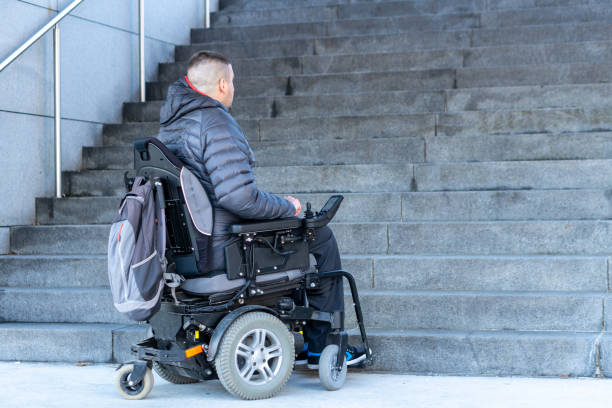
Laser therapy for pain is rapidly emerging as a groundbreaking treatment that offers hope to millions suffering from chronic pain conditions. By utilizing advanced technology, this non-invasive approach helps reduce pain, enhance healing, and improve the quality of life for many patients. In a world where surgical interventions and long-term medication use are common, laser therapy provides an innovative alternative that is worth considering.
What is Laser Therapy?
Laser therapy, particularly in the context of pain management, refers to the use of specific wavelengths of light to penetrate the skin and interact with tissues, promoting healing and reducing inflammation. This method, often known as low-level laser therapy (LLLT), harnesses the power of light-emitting diodes (LEDs) or low-level lasers to stimulate cellular function and accelerate the body’s natural healing processes.
How Does Laser Therapy Work?
The process of laser therapy involves focusing a concentrated beam of light onto the affected area. The light energy penetrates the skin and reaches the underlying tissues, where it triggers a series of biological reactions at the cellular level. These reactions include increased production of ATP (adenosine triphosphate), which is the energy currency of cells, and the release of endorphins, which are natural pain relievers. The result is a reduction in pain, inflammation, and an overall improvement in the healing process.
Types of Lasers Used in Therapy
Low-Level Laser Therapy (LLLT)
LLLT is commonly used for pain management and healing. It involves the use of lasers with a lower intensity, making it suitable for treating superficial conditions like skin wounds, joint pain, and soft tissue injuries.
High-Intensity Laser Therapy (HILT)
HILT, on the other hand, uses more powerful lasers that can penetrate deeper into the tissues. This type of laser therapy is often employed for more severe conditions, such as chronic back pain or deep muscle injuries.
Conditions Treated with Laser Therapy
Laser therapy is versatile and effective for various conditions, including:
- Chronic Pain Management: Laser therapy is frequently used to manage conditions like fibromyalgia, osteoarthritis, and neuropathic pain.
- Sports Injuries: Athletes often use laser therapy to speed up recovery from injuries like sprains, strains, and tendonitis.
- Post-Surgical Recovery: After surgery, laser therapy can help reduce swelling, decrease pain, and accelerate healing.
Benefits of Laser Therapy for Pain
One of the most significant advantages of laser therapy is its non-invasive nature. Unlike surgery, laser therapy does not require any incisions or anesthesia, reducing the risk of complications and the need for lengthy recovery periods. Patients can often resume their normal activities shortly after laser treatment. Additionally, laser therapy can reduce the reliance on pain medications, which often come with unwanted side effects and potential for dependency.
Effectiveness of Laser Therapy
Numerous studies have demonstrated the effectiveness of laser therapy in reducing pain and promoting healing. For example, research shows that LLLT can significantly reduce chronic pain and improve function in patients with osteoarthritis. Patient testimonials further support these findings, with many individuals reporting substantial relief and improved quality of life following laser therapy sessions.
Safety and Side Effects
Laser therapy is generally considered safe when performed by a qualified professional. The side effects are minimal and typically include temporary redness or slight swelling in the treated area. These effects usually resolve quickly and are much less severe than those associated with invasive procedures. It’s essential to follow the provider’s instructions to avoid any potential risks.
Comparison with Other Pain Management Techniques
When compared to traditional pain management techniques like medication or physical therapy, laser therapy offers unique benefits. It addresses the root cause of pain by promoting tissue repair rather than just masking the symptoms. Unlike surgical interventions, it does not require a lengthy recovery period and carries fewer risks. For those seeking a natural and effective way to manage pain, laser therapy is an excellent option.

Who Can Benefit from Laser Therapy?
Laser therapy is suitable for a wide range of individuals, from athletes dealing with injuries to older adults managing chronic pain conditions. While it’s generally safe, some considerations, such as age and overall health, may influence its suitability. It’s always advisable to consult with a healthcare provider to determine if laser therapy is the right choice for you.
What to Expect During a Laser Therapy Session
A typical laser therapy session is straightforward and painless. The provider will guide the laser device over the affected area, allowing the light energy to penetrate the tissues. Each session usually lasts between 10 to 30 minutes, depending on the condition being treated. Most patients require multiple sessions to achieve optimal results, with the frequency and duration of treatment tailored to individual needs.
Laser Therapy for Specific Conditions
Laser Therapy for Back Pain
Back pain is one of the most common conditions treated with laser therapy. By reducing inflammation and stimulating tissue repair, laser therapy can provide significant relief for those suffering from chronic back pain.
Laser Therapy for Arthritis
Arthritis patients often benefit from laser therapy, which helps reduce joint pain and improve mobility by addressing the inflammation and tissue damage associated with the condition.
Laser Therapy for Nerve Pain
Laser therapy is also effective in treating nerve pain, including conditions like neuropathy. The therapy can help reduce the sensitivity of nerves and promote healing in damaged areas.
Costs and Accessibility
The cost of laser therapy can vary depending on the provider, the type of laser used, and the number of sessions required. While some insurance plans may cover laser therapy, it’s important to check with your provider beforehand. Despite the costs, many find the benefits of laser therapy to be well worth the investment, particularly when it leads to significant pain relief and improved quality of life.
Future of Laser Therapy in Pain Management
The future of laser therapy in pain management looks promising, with ongoing research exploring new applications and improvements in technology. Advances in laser technology may soon allow for even more effective and accessible treatments, potentially making laser therapy a standard option for pain management worldwide.
Conclusion
Laser therapy for pain offers a revolutionary approach to managing various conditions, from chronic pain to sports injuries. Its non-invasive nature, combined with its effectiveness in reducing pain and promoting healing, makes it an attractive option for those seeking alternatives to traditional pain management methods. As technology advances, laser therapy is poised to become an even more integral part of pain management strategies, providing relief and enhancing the quality of life for countless individuals.
FAQs
What is the difference between LLLT and HILT?
LLLT uses low-intensity lasers for superficial conditions, while HILT uses high-intensity lasers for deeper tissue penetration and more severe conditions.
How long does it take to see results from laser therapy?
Results can vary, but many patients begin to notice improvements after just a few sessions. Full benefits may require several weeks of consistent treatment.
Is laser therapy safe for everyone?
While generally safe, laser therapy may not be suitable for everyone, such as those with certain medical conditions. It’s important to consult with a healthcare provider to determine suitability.
Can laser therapy replace medication for pain management?
Laser therapy can reduce the need for pain medications, but it may not completely replace them, especially in cases of severe pain. It is often used in conjunction with other treatments.
How do I find a qualified provider for laser therapy?
Look for providers with experience and certification in laser therapy. It’s also helpful to seek recommendations from healthcare professionals or trusted sources.












